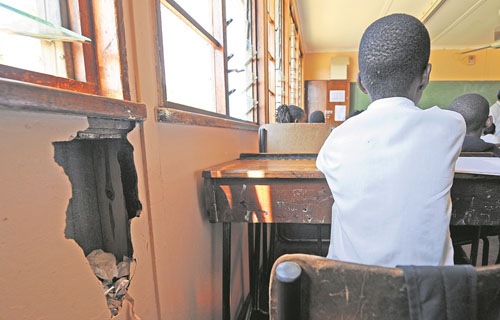The Dangers of Asbestos Exposure in Public Schools

With the asbestos exposure-related risks becoming increasingly known, the potential effects of asbestos in school buildings is a matter of concern, especially in schools that were built before the 1980s.
According to the EPA, both public, as well as non-profit private schools, need to follow certain regulatory requirements to protect children and their employees from asbestos exposure. A study conducted in 2016 showed that hundreds of students and school employees were at risk of exposure to deadly asbestos in nearly 200 Chicago public schools.
Mismanaged Asbestos in Schools Poses a Health Threat to Millions of Children
Children are particularly vulnerable to asbestos exposure because their lungs are still in the developing stage and they breathe more rapidly than adults, thus inhaling more air. Consequently, they are likely to carry a higher risk of developing asbestos-related diseases in their lifetime than adults.
Among the 184 elementary, middle, and high schools that were thoroughly verified, the inspectors only found 11 buildings that had complied with the recommendations. The results were published in a 2015 CPS asbestos surveillance update. This is alarming news for everybody involved in the study, as well as for parents and school employees alike. According to the report, some schools were identified to have damaged asbestos-containing pipe insulation that was separating at some places. Thus, all Chicago public schools identified to pose a real threat as the schools failed to follow the recommendations received from the contracted inspectors and violated the asbestos policy described in the Facility Performance Standards.
Schools Should Comply With the Asbestos Hazard Emergency Response Act (AHERA)
The Asbestos Hazard Emergency Response Act (AHERA) and its regulations require all public schools and non-profit schools including charter schools and schools that are affiliated to religious institutions to follow these safety measures:
- conducting a thorough inspection to check whether asbestos-containing materials are present
- re-inspect asbestos-containing material(s) in the affected areas every 3 years
- develop, maintain, and update an asbestos management plan and keep a copy at the school at all times
- provide annual notification to parent/teacher/employee organizations on the availability of the school's asbestos management plan and any asbestos-related actions taken or planned in the school
- designate a contact person to properly implement the responsibilities of the public school district or the non-profit school
- perform periodic surveillance of known/suspected asbestos-containing building material
- Inspections should be undertaken by trained and licensed professionals and response actions to be taken
- provide custodial staff with asbestos-awareness training
Asbestos Management Requirement in Schools
An asbestos management plan is the most effective way to help school duty holders to control asbestos in their premises. School authorities need to maintain records that are included in the Asbestos Management Plan such as:
- name and address of each school and whether it has asbestos-containing building material, and the type of asbestos-containing material
- date of the original school inspection
- plan for re-inspections
- a blueprint that identifies the location of the asbestos that remains in the school
- details of any response action or safety measures taken to control asbestos exposure
- a copy of the analysis of any building, name, and address of the laboratory that sampled the material
- name, address, and telephone number of the designated person in charge of ensuring the duties of the school district or non-profit private school are carried out
- details of steps followed to inform teachers, school employees, and students or their legal guardians regarding the inspections, reinspections, response actions, and periodic surveillance matters
Parents can contact their child's school administrator and ask for a copy of the school's asbestos management plan. This report will carry details regarding the last asbestos inspection that took place in the school and whether any exposed asbestos materials were found. Asbestos is dangerous only when its tiny fibers get released into the air when it is disturbed. If asbestos-containing materials in schools are in good condition with proper maintenance, they pose a relatively low risk to children and employees. However, regular inspections should be conducted to identify and evaluate the asbestos-containing materials and prevent disturbing these products during demolition and renovation activities.
